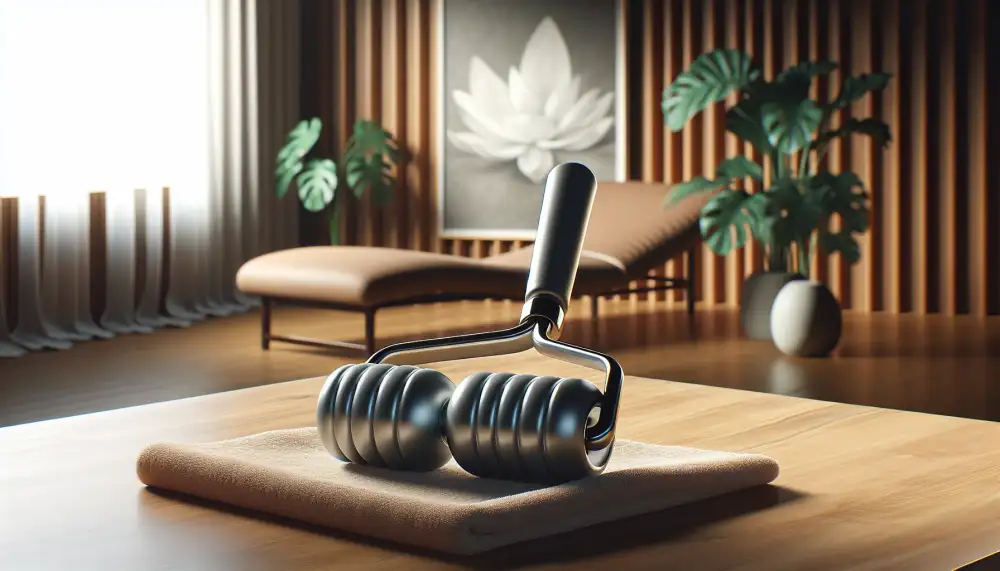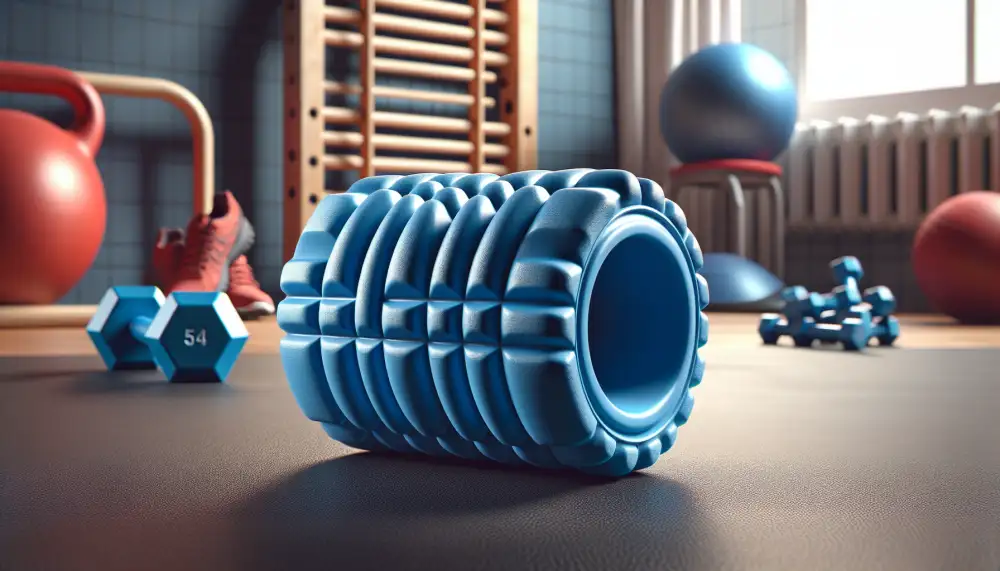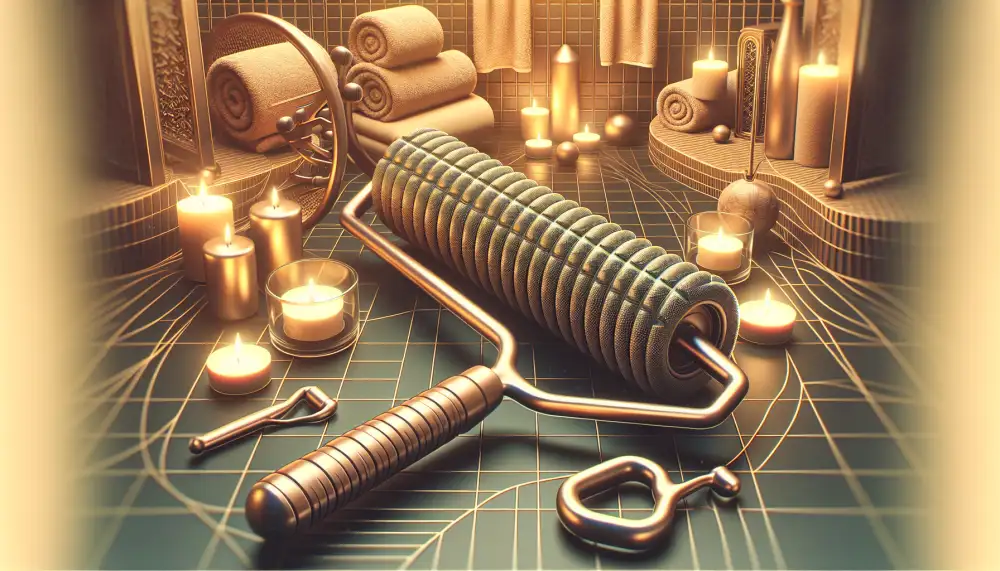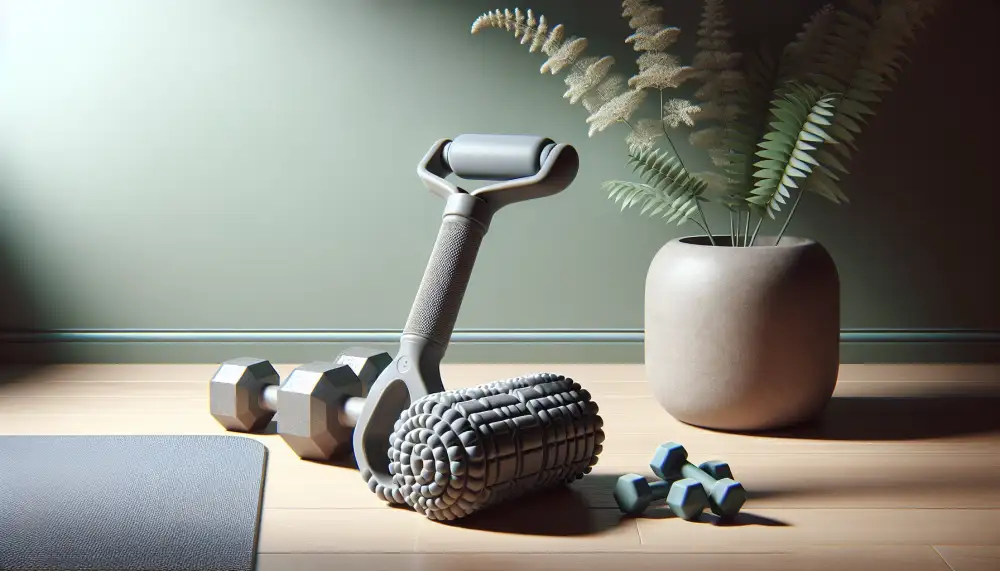Unlock Your Chest's Potential: A Guide to Chest Rollers for Muscle Relief and Recovery

- Chest Roller Benefits
- Muscle Recovery and Soreness
- Improved Blood Circulation
- Posture Correction Assistance
- Increased Flexibility and Range
- Injury Prevention Potential
- Proper Use and Techniques
- Frequency and Duration
- Combining with Other Exercises
- Precautions and Considerations
- Consulting a Healthcare Professional
Chest Roller Benefits
A chest roller is a simple yet effective tool designed to target and alleviate tightness in the chest muscles. By incorporating a chest roller into your fitness routine, you can experience a range of benefits that enhance your overall well-being.
One primary benefit is improved posture. Prolonged sitting and desk work can lead to rounded shoulders and a forward head posture. Regularly using a chest roller helps counteract these effects by releasing tension in the pectoral muscles, allowing your shoulders to naturally retract and improve your spinal alignment.
Another advantage is reduced muscle soreness and pain. Strenuous workouts or repetitive motions can cause muscle knots and tightness in the chest area. A chest roller can help break down these adhesions, promoting blood flow and reducing discomfort. This can be particularly beneficial for athletes and individuals engaged in activities that place stress on the chest muscles.
Furthermore, using a chest roller can enhance breathing capacity. Tight chest muscles can restrict the expansion of the rib cage, limiting lung capacity. By releasing tension in these muscles, a chest roller can improve your ability to take deep breaths, enhancing respiratory function and overall oxygen intake.
In addition to these physical benefits, a chest roller can also contribute to stress reduction. Chest tension is often associated with stress and anxiety. Using a chest roller can provide a soothing massage-like effect, releasing tension and promoting relaxation. This can have a positive impact on both your physical and mental well-being.
Remember to consult with a healthcare professional or a certified fitness trainer before incorporating a chest roller into your routine, especially if you have any underlying medical conditions or injuries.
Muscle Recovery and Soreness
A chest roller and massage tools can be your new best friends when it comes to muscle recovery and soreness, especially after a tough chest workout. These handy tools help to alleviate muscle tightness and soreness, improve blood flow, and speed up the recovery process.
Chest rollers are specifically designed to target the pectoral muscles. By using your body weight and rolling back and forth, you can effectively release tension and knots in the chest muscles. This increased blood flow delivers oxygen and nutrients to the muscles, promoting faster healing and reducing soreness.
Massage tools, such as massage balls or handheld massagers, offer a more targeted approach to muscle recovery. By applying pressure to specific areas of the chest, you can work out knots, release trigger points, and improve flexibility.
Remember to listen to your body and adjust the pressure and duration of your massage accordingly. If you experience any sharp pain, stop immediately and consult with a healthcare professional.

Improved Blood Circulation
Using a chest roller can contribute to improved blood circulation in the chest and surrounding areas. By applying pressure to the muscles and tissues, the roller helps to dilate blood vessels, increasing blood flow. This enhanced circulation delivers oxygen and nutrients to the muscles more efficiently, promoting healing and reducing muscle soreness. Improved blood flow can also help to remove metabolic waste products, such as lactic acid, which can build up during exercise. Regular use of a chest roller, combined with proper stretching and exercise, can contribute to overall cardiovascular health and well-being.
Similarly, using a tool specifically designed for massaging the chest muscles can offer similar benefits for blood circulation. These tools often feature textured surfaces or rotating elements that can target specific trigger points and muscle knots. By applying pressure and movement to these areas, a chest massage tool can help to release tension, reduce muscle stiffness, and promote blood flow. This can be particularly beneficial for individuals who experience chest pain or discomfort related to muscle strain or poor posture. However, it's important to use these tools with appropriate pressure and technique to avoid injury. If you have any underlying health conditions, it's always best to consult with a healthcare professional before incorporating new massage tools or techniques into your routine.
Posture Correction Assistance
A chest roller and a chest muscle massager can be valuable tools in your quest for better posture. Many people spend their days hunched over desks, which can lead to tight chest muscles and rounded shoulders. This forward posture can cause discomfort and even lead to pain over time.
| Feature | Chest Roller A | Chest Roller B |
|---|---|---|
| Material | High-density foam | Hard plastic with rubber grip |
| Portability | Lightweight and compact | Bulkier, may not fit in gym bag |
A chest roller can help to loosen up those tight chest muscles. By simply lying on the roller and moving your arms, you can target the pecs and improve flexibility. This increased flexibility can make it easier to maintain a more upright posture.
A chest muscle massager can further enhance your posture correction efforts. These devices typically use vibrations or percussive therapy to relax muscle tension and improve blood flow. By targeting the chest muscles with a massager, you can alleviate tightness and promote relaxation.
Remember, consistency is key when it comes to posture correction. Incorporate the use of a chest roller and massager into your regular routine, along with exercises that strengthen your back muscles. Over time, you may find that these tools help you stand taller and feel more confident.

Increased Flexibility and Range
Using a chest roller and incorporating regular chest massage into your routine can significantly enhance your flexibility and range of motion in your upper body. By targeting the pectoral muscles, chest rollers help release tightness and tension that can restrict movement.
As you roll out the chest muscles, you break up adhesions and knots that develop over time due to factors like exercise, poor posture, or repetitive motions. This process lengthens and relaxes the muscle fibers, improving overall flexibility.
With increased flexibility in your chest, you'll notice improvements in your posture, making it easier to stand tall and maintain proper alignment. This enhanced flexibility also translates to a wider range of motion in activities such as reaching, lifting, and rotating your arms. Whether you're an athlete striving for peak performance or simply looking to improve your mobility, incorporating a chest roller and massage into your routine can be highly beneficial.
Injury Prevention Potential
Choosing the Right Chest RollerFinding the perfect chest roller for your needs can make a world of difference in your muscle recovery and relaxation routine. Here are some key factors to consider when making your choice:
Material and Durability: Look for rollers made from high-quality, durable materials like hard foam, rubber, or sturdy plastic. These materials can withstand regular use and provide consistent pressure.
Size and Shape: Chest rollers come in various sizes and shapes. Smaller rollers offer more targeted pressure, while larger ones cover a wider surface area. Consider the specific muscle groups you want to target and choose a size that suits your needs.
Surface Texture: Some chest rollers have smooth surfaces, while others feature ridges, knobs, or textured patterns. Smooth surfaces provide gentle rolling, while textured surfaces offer deeper tissue massage and can be more effective for releasing knots and tension.
Resistance Levels: Certain chest rollers come with adjustable resistance levels. This feature allows you to customize the intensity of your massage as needed. If you're new to foam rolling, starting with a lower resistance and gradually increasing it is advisable.
Ease of Use: Choose a chest roller that is comfortable to hold and easy to maneuver. Look for ergonomic handles or grips that provide a secure hold during use.
Portability: If you travel frequently or prefer to roll on the go, consider a compact and lightweight chest roller that is easy to pack and transport.

Additional Features: Some chest rollers offer additional features like heat therapy, vibration, or Bluetooth connectivity. These features can enhance your massage experience and provide added benefits.
By considering these factors, you can choose the right chest roller that meets your specific needs and helps you achieve your desired muscle recovery and relaxation goals. Remember to consult with a healthcare professional before incorporating any new exercise or massage tool into your routine.
Proper Use and Techniques
Before using a chest roller, it's essential to warm up your chest muscles with some light stretches or exercises like arm circles and push-ups This helps prepare the muscles for deeper massage and reduces the risk of injury When using the roller, apply moderate pressure and roll it slowly back and forth across your chest muscles Focus on areas that feel particularly tight or sore, but avoid rolling directly on your bones or joints Spend 1-2 minutes on each area, breathing deeply to enhance relaxation and blood flow
Listen to your body and adjust the pressure as needed If you experience any sharp pain, stop immediately and consult a healthcare professional You can experiment with different rolling techniques to target specific areas For example, rolling vertically along your sternum can help release tension in the pectoral muscles, while rolling horizontally across your upper chest can target the upper chest and shoulder muscles
After using the chest roller, it's recommended to stretch your chest muscles again This helps improve flexibility and reduce post-workout soreness Remember that consistency is key when it comes to muscle recovery Incorporate chest rolling into your regular fitness routine 2-3 times a week to experience the full benefits
Frequency and Duration
When incorporating a chest roller into your fitness routine, consistency is key. Aim for 2-3 sessions per week, allowing your muscles adequate time to recover between workouts. Each session should last approximately 10-15 minutes.
Beginners should start with shorter durations and gradually increase the time as their chest muscles adapt. It's important to listen to your body and avoid overexertion. If you experience any pain or discomfort, stop immediately and consult with a healthcare professional.
Remember, consistency and proper technique are crucial for maximizing the benefits of chest massage. By incorporating a chest roller into your routine and following these guidelines, you can promote muscle recovery, improve flexibility, and enhance your overall chest workout experience.
Combining with Other Exercises
The chest roller and massage tools can be incorporated into your workout routine in a few ways. Many users find it beneficial to use them as part of their warm-up routine. Rolling the chest muscles can help increase blood flow and prepare the muscles for exercise. Similarly, using a massage tool on the chest can help loosen up tight muscles and improve range of motion. This can be especially helpful for exercises like bench presses or push-ups, where tight chest muscles can limit performance.

Another way to combine these tools is to use them after your workout. Post-workout, the chest roller or massage tool can help reduce muscle soreness and speed up recovery. By applying pressure to the muscles, you can help break up adhesions and promote blood flow to the area. This can help reduce pain and stiffness in the days following a workout.
Remember that consistency is key when it comes to seeing results. Incorporate these tools into your routine regularly to experience their full benefits. As always, listen to your body and stop if you feel any pain.
Precautions and Considerations
Before using a chest roller or any chest massage tool, it's crucial to prioritize your safety and well-being. If you have any pre-existing medical conditions like osteoporosis, arthritis, or a history of blood clots, consult your doctor or physical therapist for personalized advice. Start slowly and gently, gradually increasing pressure and duration as your body adapts. Avoid rolling directly on bones or areas with open wounds, rashes, or recent injuries. Listen to your body and stop immediately if you experience any sharp pain, dizziness, or discomfort. Stay hydrated before and after using the roller to support muscle function and recovery.
Remember that consistency is key. Incorporate chest rolling into your routine 2-3 times a week for optimal results. Combine it with stretching and strengthening exercises for a holistic approach to chest health. While chest rollers can be beneficial, they are not a substitute for professional medical advice. If you have any concerns about your chest health or experience persistent pain, seek guidance from a qualified healthcare professional.
Consulting a Healthcare Professional
While chest rollers and massage tools can be helpful for muscle recovery and relaxation, it's essential to consult with a healthcare professional in certain situations:
If you have any pre-existing medical conditions, such as osteoporosis, arthritis, or heart conditions.
If you have recently undergone surgery or have any injuries to your chest, ribs, or back.
If you are pregnant or breastfeeding.
If you experience any pain, discomfort, or unusual symptoms during or after using a chest roller or massage tool.
A healthcare professional can assess your individual circumstances, provide personalized advice, and determine if using a chest roller or massage tool is appropriate for you. They can also guide you on the proper techniques, frequency, and duration of use to avoid any potential risks or complications.

Remember, it's always better to err on the side of caution and seek professional medical advice when in doubt. Your health and well-being are paramount.
Published: 01. 07. 2024
Category: Food



